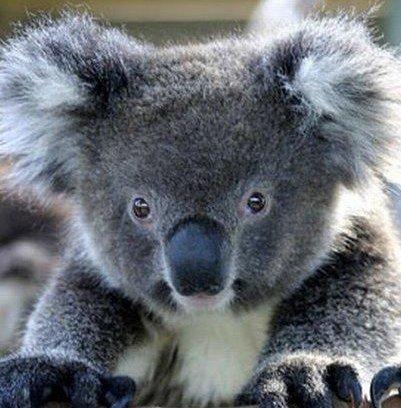The Koala is found in coastal regions of eastern and southern Australia, from near Adelaide to the southern part of Cape York Peninsula. Populations also extend for considerable distances inland in regions with enough moisture to support suitable woodlands. The Koalas of South Australia were largely exterminated during the early part of the 20th century, but the state has since been repopulated with Victorian stock. The Koala is not found in Tasmania or Western Australia. Females reach maturity at 2 to 3 years of age, males at 3 to 4 years. If healthy, a female Koala can produce one young each year for about 12 years. Gestation is 35 days. Twins are very rare; the world's first confirmed identical twin Koalas, named "Euca" and "Lyptus", were born at the University of Queensland in 1999. Mating normally occurs between December and March, the Southern Hemisphere's summer. A baby Koala is referred to as a joey and is hairless, blind, and earless. At birth the joey, only a quarter of an inch long, crawls into the downward-facing pouch on the mother's belly (which is closed by a drawstring-like muscle that the mother can tighten at will) and attaches itself to one of the two teats. Young remain hidden in the pouch for about six months, only feeding on milk. During this time they grow ears, eyes, and fur. The joey then begins to explore outside of the pouch. At about this stage it begins to consume small quantities of the mother’s "pap" (formerly thought to be excrement, but now thought to come from the mother's cecum) in order to inoculate its gut with the microbes necessary to digest eucalypt leaves. The joey will remain with its mother for another six months or so, riding on her back, and feeding on both milk and eucalypt leaves until weaning is complete at about 12 months of age. Young females disperse to nearby areas at that time; young males often stay in the mother's home range until they are two or three years old. |  Its weight is about 14 kg (31 lb) for a large southern male, to about 5 kg (11 lb) for a small northern female. Its eats only eucalyptus leaves which does not sound good because the Koala will then end up like the Panda its other threats are its cuteness because it is so cute people put them in zoos and that way the koala becomes lazy and fat just like the elephant but it is also hunted and poached for skin. |
